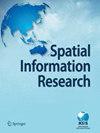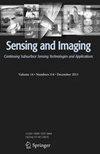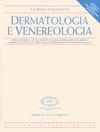期刊介绍英文:
The Spatial Information Research (SIR) mixes academia and industry for Spatial Information Science in a way that no other international journal in this field does. The journal brings science and practice together. This is reflected in a SIR article type, which contains a classical scientific part as well as a chapter with easily understandable practical implications for policy makers and practitioners. It publishes best practice examples (case reports), review as well as theories, methods and data analysis with a link (or a potential link) to spatial information. The boundary of acceptable subject matter has been intentionally left flexible so that the SIR can follow the research activities, technology applications and future trends to build a bridge between science and practice. In this regard, the journal is interested in articles having significant social science component (e.g. spatial information law, cadaster, real property, market survey, marketing strategy, urban planning, regional development, public administration, business administration) that address the social drivers or policy processes of spatial information. The focus of the journal is on all aspects of the application of spatial information science exploring cross-disciplinary exchange of knowledge within and across sectors and disciplines including but not limited to; Geographic Information Systems (GIS), Remote Sensing, Unmanned Aerial Vehicle (UAV), open source geospatial software, cadaster, smart city, Global Positioning Systems (GPS), Internet of Things (IOT), 3D visualization, spatial statistics, cartography, Computer-aided design (CAD), photogrammetry, image processing, Topographic surveys, mobile mapping, Ubiquitous Sensor Network (USN), programming languages, computer graphics. The different types of articles published in Spatial Information Research are indicated as below;• Original research article (5,000 words): Providing a novel and original contribution to the scientific fields of study outlined above. • Review papers (extensive state-of-the-art surveys of established or emerging topics or application areas); • Special case reports (new useful ideas and brief pertinent comments of a technical nature). • Others that editorial board agrees; rapid communications and discussions, financial funding proposal, opinions, comments and proposals, tutorial.







 扫码关注我们
扫码关注我们

